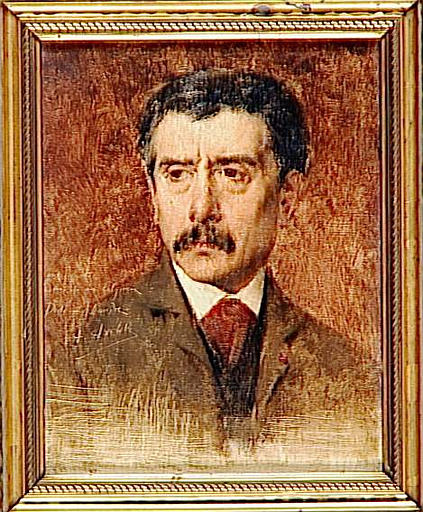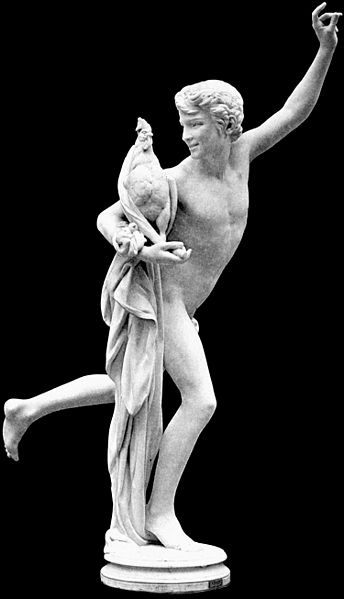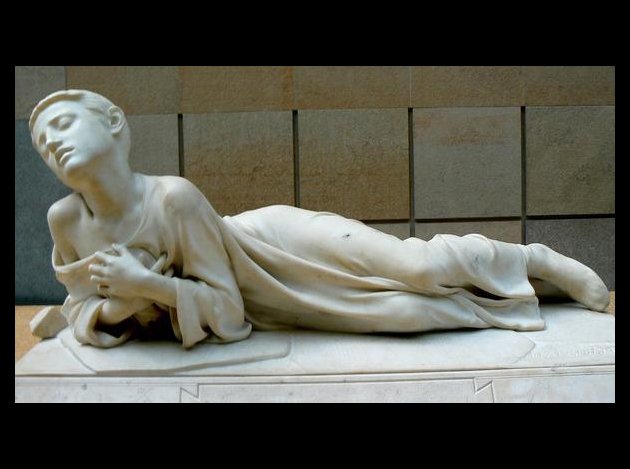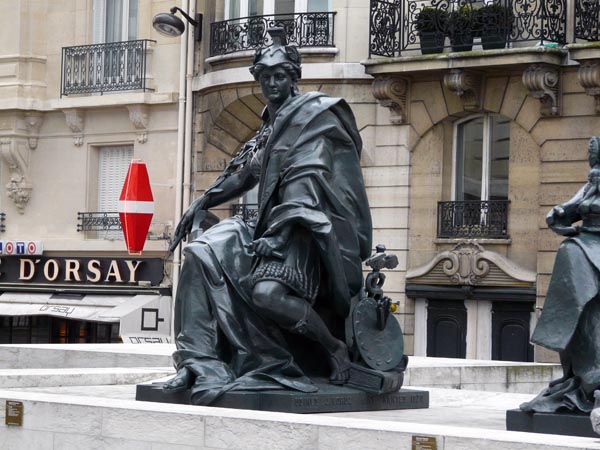<Back to Index>
- Chemist Friedrich August Kekulé von Stradonitz, 1829
- Sculptor Jean Alexandre Joseph Falguière, 1831
- First Secretary of the Central Committee of the Bulgarian Communist Party Todor Hristov Zhivkov, 1911
PAGE SPONSOR

Jean Alexandre Joseph Falguière (also given as Jean-Joseph-Alexandre Falguière, or in short Alexandre Falguière) (7 September 1831, Toulouse - 20 April 1900, Paris) was a French sculptor and painter.
He was born in Toulouse. A pupil of the École des Beaux-Arts, he won the Prix de Rome in 1859; he was awarded the medal of honor at the Paris Salon in 1868 and was appointed officer of the Légion d'honneur in 1878.
His first bronze statue of importance was Le Vainqueur au Combat de Coqs (Victor of the Cockfight) (1864), and Tarcisus the Christian Boy - Martyr followed in 1867; both were exhibited in the Luxembourg Museum and are now in the Musée d'Orsay. His more important monuments are those to Admiral Courbet (1890) at Abbeville and the famous Joan of Arc. Among more ideal work are Eve (1880), Diana (1882 and 1891), Woman and Peacock (a.k.a. Juno and The Peacock), and The Poet, astride his Pegasus spreading wings for flight. He sculpted The Dancer, based on Cléo de Mérode which today is also in the Musée d'Orsay.
His Triumph of the Republic (1881 - 1886), a vast quadriga for the Arc de Triomphe, Paris, is perhaps more amazingly full of life than others of his works, all of which reveal this quality of vitality in superlative degree.
To these works should be added his monuments to Cardinal Lavigerie and to General de La Fayette (in Washington, DC), and his statues of Alphonse de Lamartine (1876) and St Vincent de Paul (1879), as well as the Honoré de Balzac, which he executed for the Société des gens de lettres on their rejection of that by Auguste Rodin; and the busts of Carolus-Duran and Ernest Alexandre Honoré Coquelin (1896).
Falguière was a painter as well as a sculptor, but somewhat inferior in merit. He displays a fine sense of colour and tone, added to the qualities of life and vigour that he instils into his plastic work. His Wrestlers (1875) and Fan and Dagger (1882; a defiant Spanish woman) were in the Luxembourg, and other pictures of importance are The Beheading of St John the Baptist (1877), The Sphinx (1883), Acis and Galatea (1885), Old Woman and Child (1886) and In the Bull Slaughter - House.
He also taught; among his students were Francis Edwin Elwell, Laurent Marqueste, Henri Crenier and Théophile Barrau.
He became a member of the Institut de France (Académie des Beaux-Arts) in 1882.
Falguière died in Paris in 1900 and was interred there in the Père Lachaise Cemetery, where his monument is by his pupil Marqueste.


